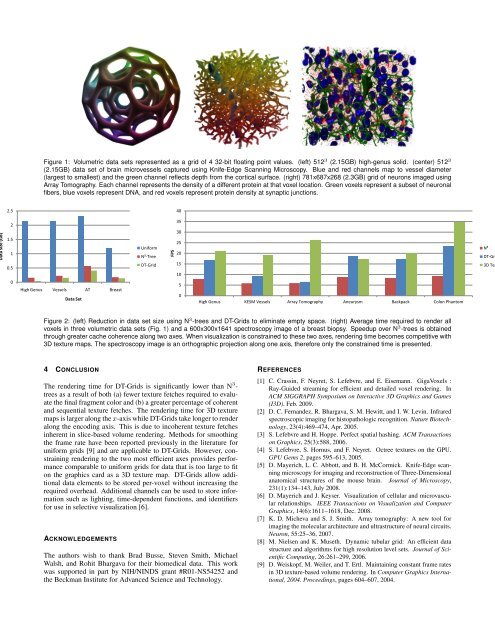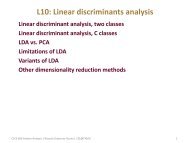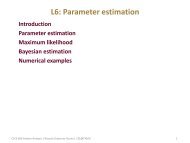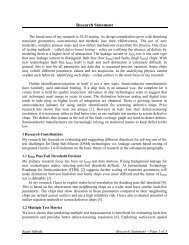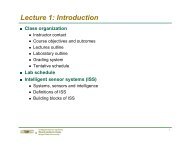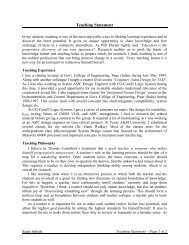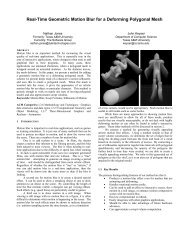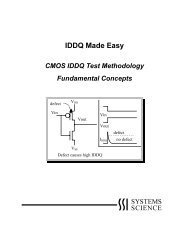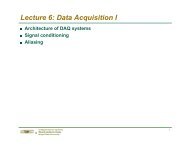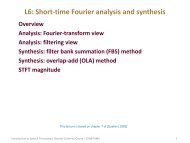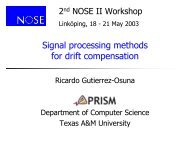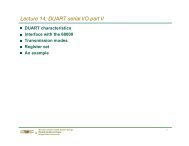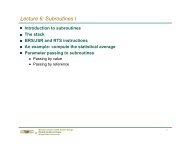GPU-based Dynamic Tubular Grids for Sparse Volume Rendering
GPU-based Dynamic Tubular Grids for Sparse Volume Rendering
GPU-based Dynamic Tubular Grids for Sparse Volume Rendering
Create successful ePaper yourself
Turn your PDF publications into a flip-book with our unique Google optimized e-Paper software.
Data Size (Gb)<br />
2.5<br />
2<br />
1.5<br />
1<br />
0.5<br />
0<br />
Figure 1: <strong>Volume</strong>tric data sets represented as a grid of 4 32-bit floating point values. (left) 512 3 (2.15GB) high-genus solid. (center) 512 3<br />
(2.15GB) data set of brain microvessels captured using Knife-Edge Scanning Microscopy. Blue and red channels map to vessel diameter<br />
(largest to smallest) and the green channel reflects depth from the cortical surface. (right) 781x687x268 (2.3GB) grid of neurons imaged using<br />
Array Tomography. Each channel represents the density of a different protein at that voxel location. Green voxels represent a subset of neuronal<br />
fibers, blue voxels represent DNA, and red voxels represent protein density at synaptic junctions.<br />
High Genus Vessels AT Breast<br />
Data Set<br />
Uni<strong>for</strong>m<br />
N³-Tree<br />
DT-Grid<br />
FPS<br />
40<br />
35<br />
30<br />
25<br />
20<br />
15<br />
10<br />
5<br />
0<br />
High Genus KESM Vessels Array Tomography Aneurysm Backpack Colon Phantom<br />
Figure 2: (left) Reduction in data set size using N 3 -trees and DT-<strong>Grids</strong> to eliminate empty space. (right) Average time required to render all<br />
voxels in three volumetric data sets (Fig. 1) and a 600x300x1641 spectroscopy image of a breast biopsy. Speedup over N 3 -trees is obtained<br />
through greater cache coherence along two axes. When visualization is constrained to these two axes, rendering time becomes competitive with<br />
3D texture maps. The spectroscopy image is an orthographic projection along one axis, there<strong>for</strong>e only the constrained time is presented.<br />
4 CONCLUSION<br />
The rendering time <strong>for</strong> DT-<strong>Grids</strong> is significantly lower than N 3 -<br />
trees as a result of both (a) fewer texture fetches required to evaluate<br />
the final fragment color and (b) a greater percentage of coherent<br />
and sequential texture fetches. The rendering time <strong>for</strong> 3D texture<br />
maps is larger along the x-axis while DT-<strong>Grids</strong> take longer to render<br />
along the encoding axis. This is due to incoherent texture fetches<br />
inherent in slice-<strong>based</strong> volume rendering. Methods <strong>for</strong> smoothing<br />
the frame rate have been reported previously in the literature <strong>for</strong><br />
uni<strong>for</strong>m grids [9] and are applicable to DT-<strong>Grids</strong>. However, constraining<br />
rendering to the two most efficient axes provides per<strong>for</strong>mance<br />
comparable to uni<strong>for</strong>m grids <strong>for</strong> data that is too large to fit<br />
on the graphics card as a 3D texture map. DT-<strong>Grids</strong> allow additional<br />
data elements to be stored per-voxel without increasing the<br />
required overhead. Additional channels can be used to store in<strong>for</strong>mation<br />
such as lighting, time-dependent functions, and identifiers<br />
<strong>for</strong> use in selective visualization [6].<br />
ACKNOWLEDGEMENTS<br />
The authors wish to thank Brad Busse, Steven Smith, Michael<br />
Walsh, and Rohit Bhargava <strong>for</strong> their biomedical data. This work<br />
was supported in part by NIH/NINDS grant #R01-NS54252 and<br />
the Beckman Institute <strong>for</strong> Advanced Science and Technology.<br />
REFERENCES<br />
[1] C. Crassin, F. Neyret, S. Lefebvre, and E. Eisemann. GigaVoxels :<br />
Ray-Guided streaming <strong>for</strong> efficient and detailed voxel rendering. In<br />
ACM SIGGRAPH Symposium on Interactive 3D Graphics and Games<br />
(I3D). Feb. 2009.<br />
[2] D. C. Fernandez, R. Bhargava, S. M. Hewitt, and I. W. Levin. Infrared<br />
spectroscopic imaging <strong>for</strong> histopathologic recognition. Nature Biotechnology,<br />
23(4):469–474, Apr. 2005.<br />
[3] S. Lefebvre and H. Hoppe. Perfect spatial hashing. ACM Transactions<br />
on Graphics, 25(3):588, 2006.<br />
[4] S. Lefebvre, S. Hornus, and F. Neyret. Octree textures on the <strong>GPU</strong>.<br />
<strong>GPU</strong> Gems 2, pages 595–613, 2005.<br />
[5] D. Mayerich, L. C. Abbott, and B. H. McCormick. Knife-Edge scanning<br />
microscopy <strong>for</strong> imaging and reconstruction of Three-Dimensional<br />
anatomical structures of the mouse brain. Journal of Microscopy,<br />
231(1):134–143, July 2008.<br />
[6] D. Mayerich and J. Keyser. Visualization of cellular and microvascular<br />
relationships. IEEE Transactions on Visualization and Computer<br />
Graphics, 14(6):1611–1618, Dec. 2008.<br />
[7] K. D. Micheva and S. J. Smith. Array tomography: A new tool <strong>for</strong><br />
imaging the molecular architecture and ultrastructure of neural circuits.<br />
Neuron, 55:25–36, 2007.<br />
[8] M. Nielsen and K. Museth. <strong>Dynamic</strong> tubular grid: An efficient data<br />
structure and algorithms <strong>for</strong> high resolution level sets. Journal of Scientific<br />
Computing, 26:261–299, 2006.<br />
[9] D. Weiskopf, M. Weiler, and T. Ertl. Maintaining constant frame rates<br />
in 3D texture-<strong>based</strong> volume rendering. In Computer Graphics International,<br />
2004. Proceedings, pages 604–607, 2004.<br />
N³<br />
DT-Gri<br />
3D Tex


